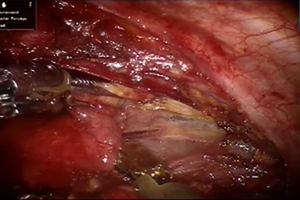Minimally invasive mediastinal surgery
Abstract
In the past, mediastinal surgery was associated with the necessity of a maximum exposure, which was accomplished through various approaches. In the early 1990s, many surgical fields, including thoracic surgery, observed the development of minimally invasive techniques. These included video-assisted thoracic surgery (VATS), which confers clear advantages over an open approach, such as less trauma, short hospital stay, increased cosmetic results and preservation of lung function. However, VATS is associated with several disadvantages. For this reason, it is not routinely performed for resection of mediastinal mass lesions, especially those located in the anterior mediastinum, a tiny and remote space that contains vital structures at risk of injury. Robotic systems can overcome the limits of VATS, offering three-dimensional (3D) vision and wristed instrumentations, and are being increasingly used. With regards to thymectomy for myasthenia gravis (MG), unilateral and bilateral VATS approaches have demonstrated good long-term neurologic results with low complication rates. Nevertheless, some authors still advocate the necessity of maximum exposure, especially when considering the distribution of normal and ectopic thymic tissue. In recent studies, the robotic approach has shown to provide similar neurological outcomes when compared to transsternal and VATS approaches, and is associated with a low morbidity. Importantly, through a unilateral robotic technique, it is possible to dissect and remove at least the same amount of mediastinal fat tissue. Preliminary results on early-stage thymomatous disease indicated that minimally invasive approaches are safe and feasible, with a low rate of pleural recurrence, underlining the necessity of a “no-touch” technique. However, especially for thymomatous disease characterized by an indolent nature, further studies with long follow-up period are necessary in order to assess oncologic and neurologic results through minimally invasive approaches. Furthermore, increased robotic experience and studies, including randomized controlled trials, are needed to validate the findings of the current literature.
Cover






